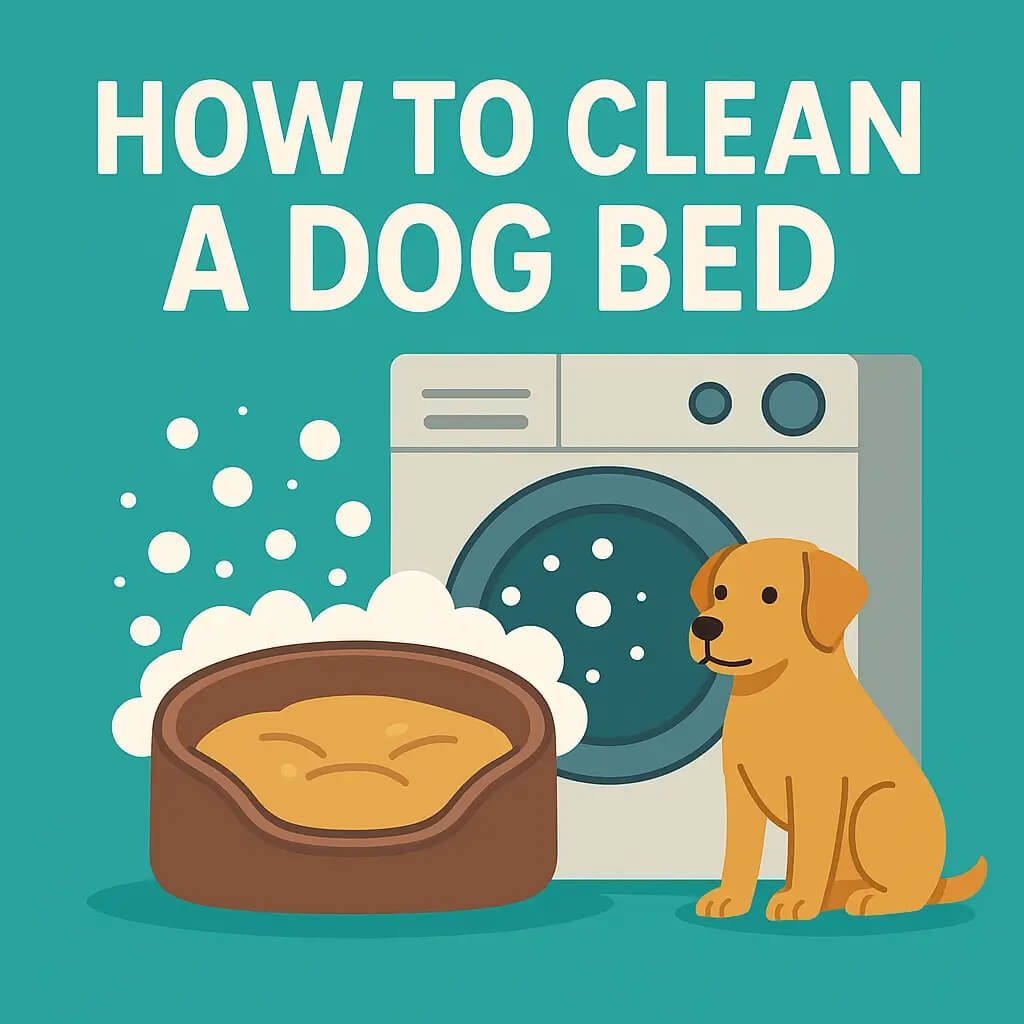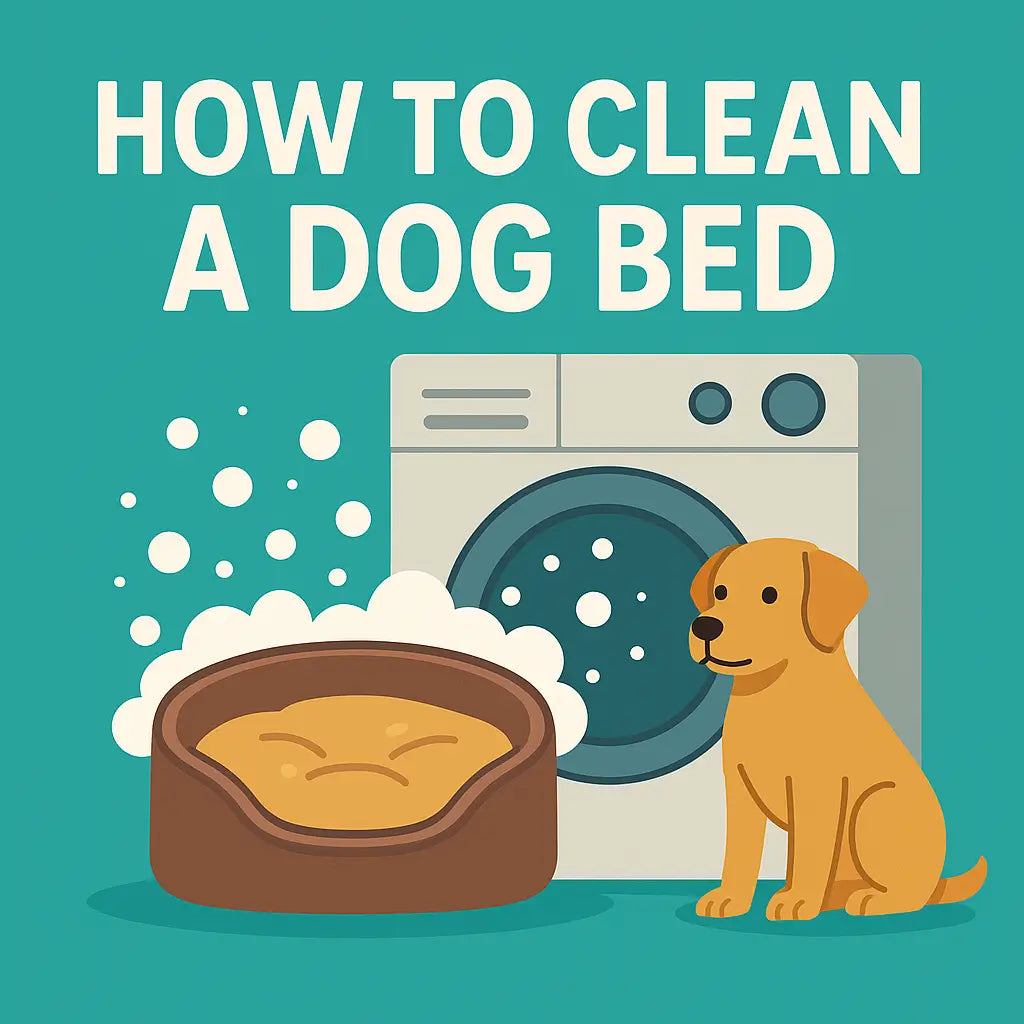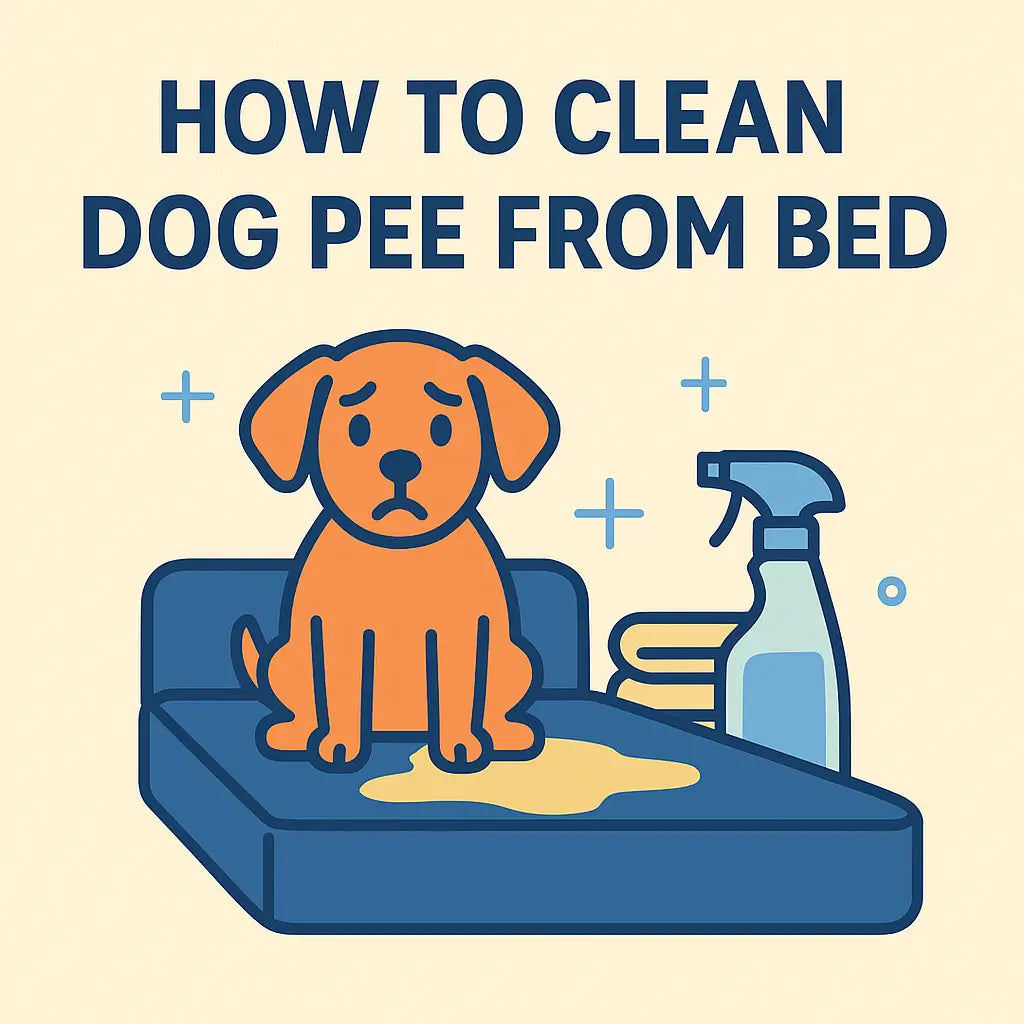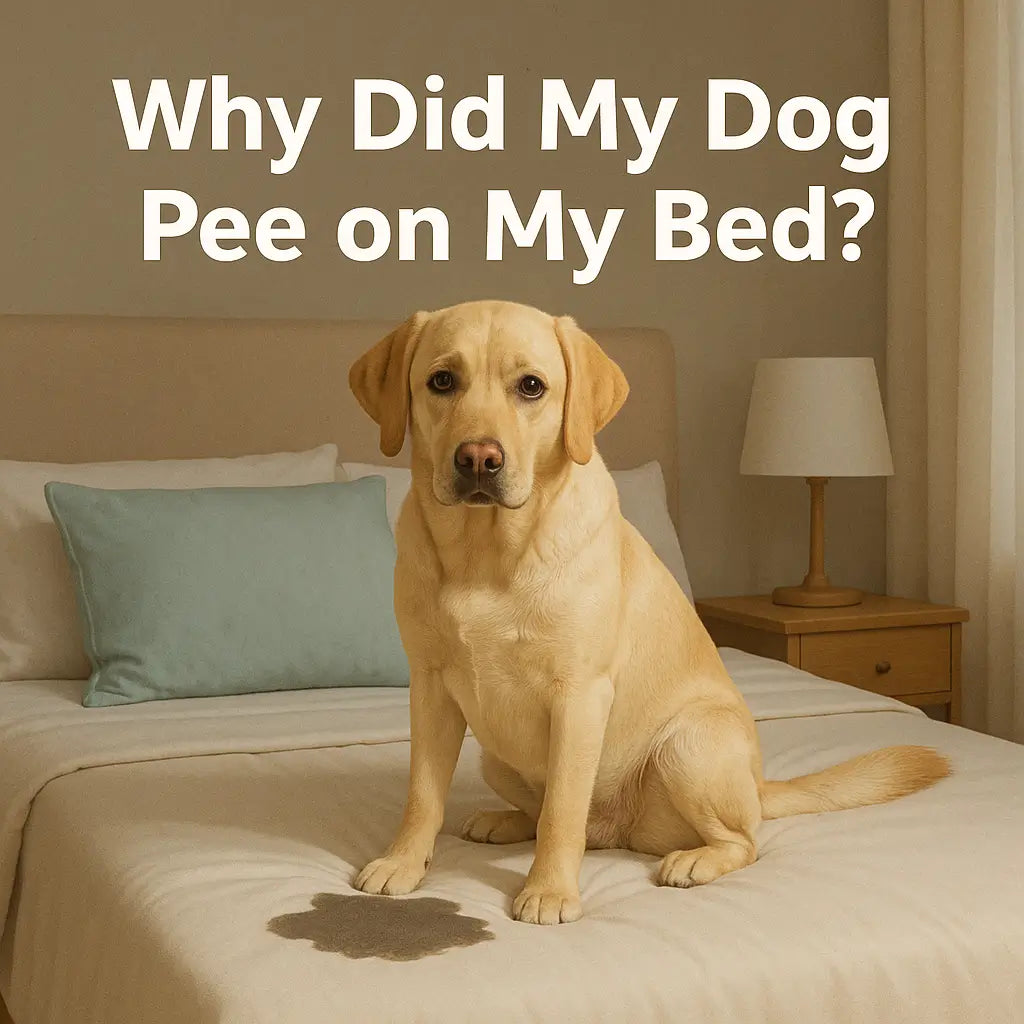If you share your sofa with one of the 94 million U.S. pet-owning households, you already know that a dirty dog bed can smell like a wet park and trigger sneezes for family members with sensitive skin. Regular washing kills fleas, bacteria, and dust mites while keeping the fabric soft for your furry friend. Below you’ll find a simple, science-backed routine that works for every style of pet bed.
Supplies Checklist
|
What You Need |
Why It Matters |
|---|---|
|
HEPA vacuum or lint roller |
Remove pet hair and dirt before water hits the fabric. |
|
Unscented, Safer Choice detergent |
Cleans deeply without perfumes that can irritate canine noses. |
|
Enzymatic cleaner + spray bottle |
Breaks down urine and food stains fast. |
|
Baking soda |
Natural odor fighter; safe if a curious puppy licks the cover. |
|
Old toothbrush |
Great for scrubbing zipper seams and stubborn stains. |
|
Mesh laundry bag |
Protects small dog bed covers in the washer. |
Know Your Bed Type
Not every pet bed survives a spin on the normal cycle. Identify your model first:
-
Pillow or bolster beds (poly-fill): Machine wash on hot with an extra rinse cycle; tumble on low heat.
-
Memory-foam slabs: Remove cover only. Hand-wash the core in a large basin of warm water and pet-friendly detergent; then gently squeeze—never wring—to avoid cracks.
-
Cooling-gel beds: Spot-clean with mild soap, rinse, and air dry away from direct sun.
-
Cedar-chip or shredded-foam beds: Empty fill into a trash bag, wash the shell, then replace with fresh chips or new foam.
Check the care tag or the manufacturer’s instructions before you dunk the entire bed—ignoring them can void warranties or trap excess moisture inside the foam, leading to mold.
Step-by-Step: Beds With Removable Covers
-
Vacuum & Roll – Use a HEPA head to lift dirt and excess hair.
-
Spot Treat – Spray stains with enzyme solution; wait 15 minutes.
-
Machine Washing – Insert the cover in a mesh bag, add unscented detergent, set water to 160 °F (CDC standard) and choose a normal cycle with an extra rinse for full soap removal.
-
Disinfect Core – While the drum runs, wipe the foam with a mix of ½ cup white vinegar + ½ gallon warm water; let sit 10 minutes, then wipe with clean water.
-
Dry Completely – Tumble the cover on low heat or air dry flat; prop the core against a wall with a fan until no damp spots remain—moist foam breeds bacteria.
Pro tip: Add ½ cup baking soda to the rinse to neutralize odors and soften fabric without fabric softeners, which can coat fibers and lock in dirt.
Step-by-Step: One-Piece or Foam Beds
If your dog bed is a single foam slab—or the cover is sewn shut—skip the washer and use a large basin or bathtub:
-
Vacuum first to remove pet hair and surface dirt.
-
Fill the tub with enough warm water to completely submerge the foam (lukewarm protects the glue seams).
-
Add ¼ cup pet-friendly detergent plus ½ cup white vinegar for odor control; swish until sudsy.
-
Place the bed in; gently squeeze like a sponge to push soapy water through. Avoid twisting—foam tears easily.
-
Drain and refill with clean water twice; a final extra rinse cycle by hand prevents residue that can irritate sensitive skin.
-
Towel-press the foam to pull out excess moisture, then set it on a drying rack with two box fans. Dry 24–48 h until the core feels crisp. Fast airflow stops mold—the same rule mattress experts give for wet memory foam.
-
Finish with a quick sniff test. Any damp, musty scent means more fan time—mold loves hidden moisture.
Stain & Odor Rescue Guide
|
Stain |
Cleaning Solution |
Extra Tip |
|---|---|---|
|
Urine |
Enzyme spray + baking soda |
UV flashlight to find old spots. |
|
Mud |
1 Tbsp unscented detergent in 2 c water |
Brush seams with an old toothbrush. |
|
Blood |
Dab 3% hydrogen peroxide; rinse cold |
Repeat until fizz stops, then wash. |
|
Vomit |
½ cup white vinegar + ½ cup water in spray bottle |
Blot, then wash on hot water cycle. |
|
General odor |
½ cup baking soda in rinse |
Safe for most fabrics; skip fabric softeners. |
How Often to Wash a Dog Bed
Most vets suggest a full wash every two weeks, but factors like shedding and outdoor play change the math. Hot-water research shows a 160 °F wash kills 100 % of dust mites; mites trigger itching in both dogs and people. Use this rule of paw:
-
Indoor lap dog → every 3 weeks.
-
Heavy shedder / allergy family → weekly.
-
Adventure hound (park, mud, lake) → after each dirty outing.
Post these targets on the fridge and set calendar reminders—regular cadence beats deep-clean panic.
Between-Wash Hacks
Staying fresh doesn’t always need soap:
-
Daily shake-out outside to ditch loose debris.
-
HEPA vacuum the cover every 48 h; a Kansas State pet-hygiene test found this cuts hair build-up by ≈60 %.
-
Sun-bathe the bed for 30 min—UV helps tame odor-causing bacteria.
-
Keep a paw-wipe station at the door; less dirt on paws = fewer washes.
-
Slip a light fleece dog bed cover over luxurious beds. It’s faster to toss a thin cover into the washing machine than the entire bed.
These micro-steps stretch time between full wash cycles and save energy.
FAQs
Can I wash a memory-foam dog bed in the washer?
No—machine agitation can crack the foam. Remove the cover and hand-wash the core as shown above.
What water temperature kills fleas and bacteria?
Hot water (≥140 °F) kills most pests; the CDC recommends 160 °F for full sanitize cycles.
Is bleach safe for pet bedding?
Bleach strips waterproof coatings and can irritate skin. Use unscented detergent plus vinegar or enzyme cleaners instead.
How do I dry a dog bed fast indoors?
Towel-press, then aim two box fans at the core. Finish on low heat in the dryer if the care label allows.
Conclusion
Hot water + unscented, pet-safe soap = germ-free bed. Match your method to the bed type, vacuum hair first, and dry until bone-dry to stop mold.












